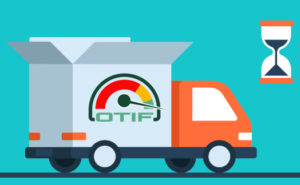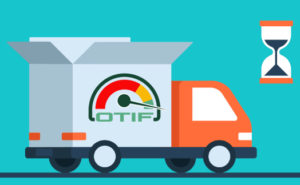Siri, can you improve my OTIF?

Technology advances; Moore’s law
It is amazing how fast things are developing and how quickly the number of options is expanding; Apple’s Siri, Google’s Assistant, Amazon’s Alexa, Alibaba’s Genie, etc. Who would have believed 10 years ago that a computer could talk to you and that your smartphone would order your groceries or your Latte Macchiato? That we would have self-driving cars?
In books or articles about the current developments in technology, Moore’s law is often given as the explanation of this exponential growth. The same sources state that we haven’t seen the end of it. Technological advancement is here to stay.
AI, machine learning, deep learning
At the same time we read and hear about the technological developments in learning. Books on these topics dominate the bestseller lists and it seems we will be stepping in science fiction workplaces very soon. Machine learning is the state of the art in Artificial Intelligence. How do we train computers to learn from their own experiences? Deep learning is even more futuristic and integrates neural networks in the learning ability of computers.
Is this the future? Is everything an algorithm and will computers take over? Can we stop learning as human beings because computers will do this for us?
What’s happening anyway is that we run a serious risk of falling behind. If we don’t learn faster and smarter, we won’t be able to deal with all the technological developments.
Problem versus trade-off
Can Siri or Alexa run my Supply Chain in the future?
There is no doubt that AI, analytics, IoT, robots, etc. will have a huge impact. In a recent article in The Economist (Mar 28th 2018) McKinsey estimates that firms will derive between $1.3trn and$2trn a year in value from using AI in supply chains and manufacturing.
Is our role as human beings reduced to supervising and training of machines?
Let’s take S&OP/IBP as an example. In our trainings we elaborate on the difference between a problem and a trade-off. A problem normally has a solution where a trade-off doesn’t have one solution. Given the context, perspectives, etc. a choice has to be made. This is one of the key elements in S&OP/IBP: how to decide on trade-offs given the different involved functional “optimisers” and how to make the key trade-offs transparent for the right decision. Without doubt human judgement, political savviness and EQ are needed here. This is the area where we need to develop our competencies and skills further.
A blend of competencies and skills; the human factor
There is no doubt that we need to keep developing our skills related to technological developments in order to ensure maximum leverage from the new and future tools and techniques. The difference between good and excellent will be made however on the “soft” side. This will help us to sell our ideas and bridge communication gaps between functions/departments/people.
The central driver in S&OP/IBP remains human behaviour and involves many complex social interactions. For example, every manager has a difference incentive, creating intentional functional biases, but we still have to work together towards a common goal.
Survival of the fittest
Continuous learning & development is crucial and must be tailored to the needs, the people, the organisation, the next step, etc. Technology will definitely play a more important role in the future, also in the S&OP/IBP process. But Siri won’t take over everything…. The human factor will even be more important in the future. It is survival of the fittest all over again. Continuous learning is a necessity to survive, now more than ever….



